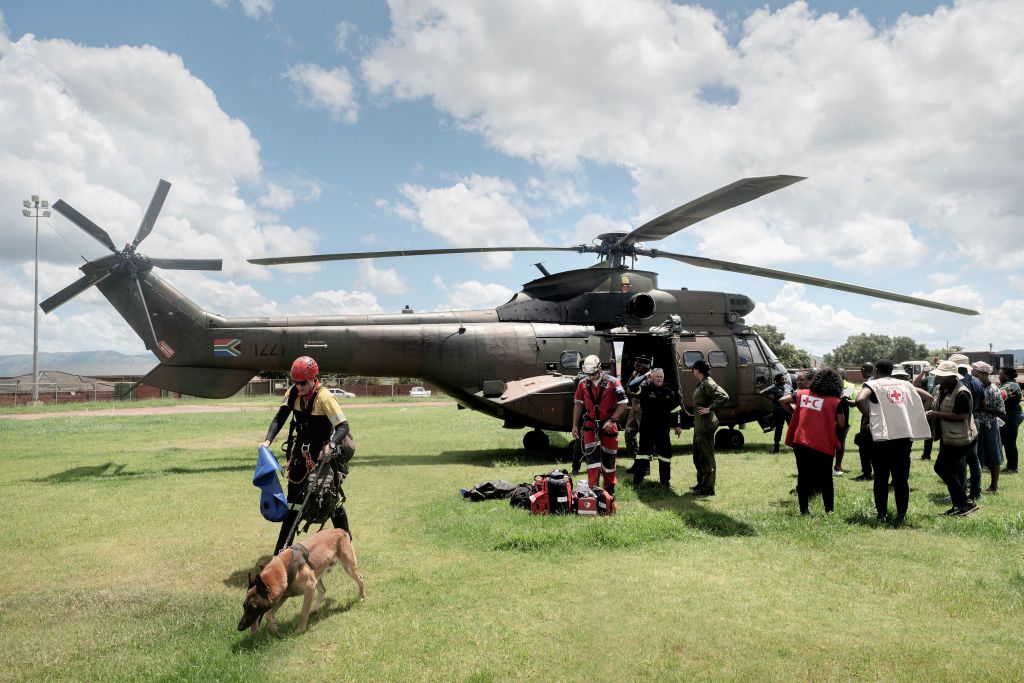In Wake of Floods, SANDF to Establish a Disaster Management Unit
ADF STAFF
A day after South African President Cyril Ramaphosa declared a national state of disaster over flooding that affected seven of the country’s nine provinces, the South African National Defence Force (SANDF) announced it will establish a unit dedicated to disaster management countrywide.
Through the unit, the South African Army will lead responses to disasters. Soldiers were already responding to flood victims in affected provinces while safeguarding utility infrastructure, said SANDF chief Gen. Rudzani Maphanywa. The unit will have its own resources specific to disaster management.
“The boats and the aircrafts that I [currently] take to go and respond to a disaster are the boats and aircraft that are meant for war fighting,” Maphanywa said at a media briefing. “We want to have a dedicated team that we will resource to deal primarily with disasters when and if we are required to respond. I think in that way we will not be doing a disservice both to ourselves and to the country.”
According to Maphanywa, SANDF uses all assets available to respond to disasters. In mid-February it was helping flood victims in Mpumalanga and KwaZulu-Natal and was planning with local disaster management authorities to provide support following the state of disaster, defenceWeb reported.
The Eastern Cape and Mpumalanga provinces have been most affected by the floods that began in early February, while parts of the Gauteng, KwaZulu-Natal, Limpopo, Northern Cape and North West provinces also flooded. More than a dozen people have been killed, many more are missing, and thousands have been displaced.
Damaged roads and destroyed bridges made it difficult for SANDF, the South African Police Service (SAPS) and various organizations to deliver aid. In some areas, relief packages have been delivered and search and rescue efforts conducted by helicopter.
The president’s office said the National Disaster Management Centre received reports of flooded homes, swept away vehicles, overflowing dams and sewage facilities, as well as damage to a hospital in Limpopo. Farmers suffered crop and livestock losses.
“With the continued strengthening of the La Niña event, the country can expect above-normal rainfall and below-normal temperatures over the summer rainfall areas,” Vincent Magwenya, the president’s spokesperson, said in a February 14 report by floodlist.com. “Taken together, these conditions demand the provision of temporary shelters, food and blankets to homeless families and individuals and the large-scale, costly rehabilitation of infrastructure.”
Terrifying Ordeals
Survivors of the flooding described terrifying ordeals.
In Mpumalanga, Khanyisile Hlekwa, 33, said she screamed for help as floodwaters burst into the home she shared with her four children.
“I thought I was going to die,” Hlekwa told Agence France-Presse. “The water was so high and it was swirling. The floods came heavily through the windows at 4 a.m. When I tried to call the neighbors for help, I realized they were also trapped in their house. That is when I started to scream for help.”
Hlekwa said the water level was above her waist when a neighbor pulled her and her children out through a window with a rope.
On February 23, SANDF Soldiers and Police divers rescued two men and two women who were caught in heavy rains while fishing on the Limpopo River. The group said they survived on fish and rainwater while they were stranded on two small islands in the middle of the river.
They were spotted by SANDF Soldiers patrolling in the area.
Booi Munyai, 54, one of the survivors, said the group was terrified when they noticed the water level rising. They didn’t realize that torrential rains were forecast.
“I was relieved when I saw a [SAPS] helicopter approaching us,” Munyai told South African newspaper Daily Maverick. “The chopper landed on the two islands and picked us up to safer ground.”
Video footage of the rescue shows Munyai collapse in exhaustion as he leaves the helicopter.


Comments are closed.